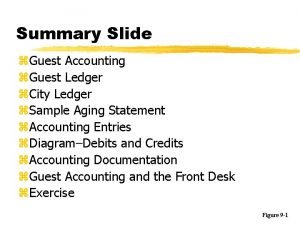S MAHESWARI GUEST LECTURER IN GEOGRAPHY GCWAK GEOGRAPHY













- Slides: 13

S. MAHESWARI GUEST LECTURER IN GEOGRAPHY GCW(A)K GEOGRAPHY OF INDIA TOPIC: DRAINAGE SYSTEM IN INDIA 08. 2020 [PART 2]

DRAINAGE SYSTEM IN INDIA

INDIAN RIVERS

• PENINSULAR RIVERS 1. EAST WARD RIVERS 2. WEST WARD RIVERS

EASTWARD RIVERS

EAST WARD FLOWING RIVERS FOLLOWING IN THE MAIN RIVERS OF EAST WARD FLOWING: • The Mahanathi • The Brahmani • The Subernarekha • The Godavari • The Krishna • The Pennar • The Kaveri • The Tambraparni

WESTWARD FLOWING RIVERS

WESTWARD FLOWING RIVER Following is the main rivers of eastward flowing: • The Narmadha • The Tapti • The Sabarmati • The Luni • The Mahi



COMPARISON BETWEEN HIMALAYAN AND PENINSULAR RIVERS HIMALAYAN RIVERS PENIMSULAR RIVERS • These rivers originate from the • These river originate from the Himalayan mountain ramges. peninsular plateaus in India. • They are longer and larger than the peninsular rivers. • They have larger basins and catchment area. • The bedrocks of these rivers are soft, sedimentary and easily erodible. • They are perennial in nature, flow throughout the year. • They are comparatively smaller and shorter than the Himalayan rivers. • They have smaller basins and catchment areas. • The bedrocks of these rivers are hard and not easily erodible. • They are seasonal and non-pernnial so may not flow throughout the year.

HIMALAYAN RIVERS • They are fed by the meltwater from glaciers and rains. • They form V-shaped valleys. • They form meanders. • They form big deltas at their mouths where they meet the sea. • They are antecedent rivers, i. e. They maintain tjeir original course and pattern in spite of the changes in the rock topography. PENINSULAR RIVERS • They are fed only rains. • They form U-shaped valleys. • They may not form meanders. • They form small rivers and estuaries. • They are consequent rivers i. e. They flow in the direction of the slope

 Lecturer's name or lecturer name
Lecturer's name or lecturer name Guest lecturer in geography
Guest lecturer in geography Cfa lecturer handbook
Cfa lecturer handbook Designation lecturer
Designation lecturer 140000/120
140000/120 Good morning teacher good morning teacher
Good morning teacher good morning teacher Designation of lecturer
Designation of lecturer Lector vs lecturer
Lector vs lecturer Photography lecturer
Photography lecturer Lecturer name
Lecturer name Jeannie watkins
Jeannie watkins Lecturer in charge
Lecturer in charge Lecturer in charge
Lecturer in charge Pearson lecturer resources
Pearson lecturer resources

























